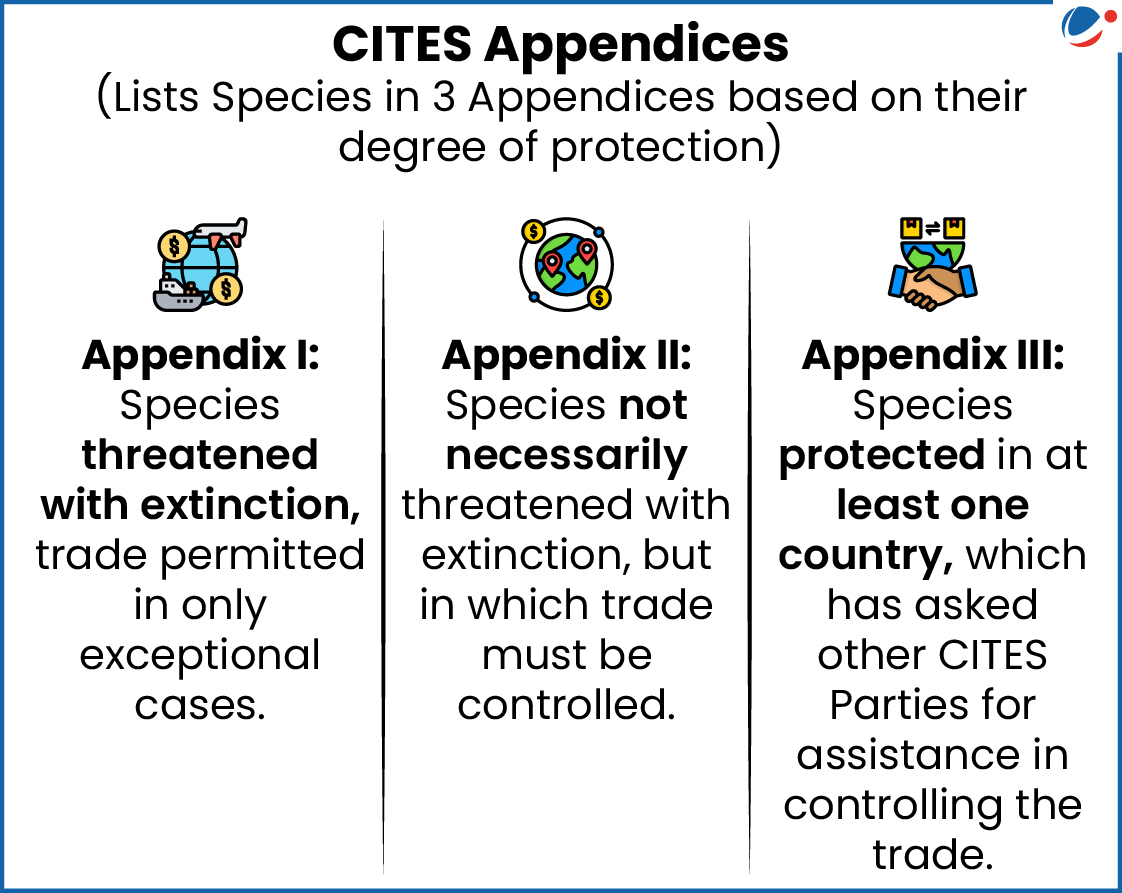Originally conceived in 1963 at the International Union for Conservation of Nature (IUCN) meeting, it entered into force in 1975, as a first of its kind global agreement.
About CITES
- Aim: Voluntary international agreement between governments ensuring international trade in specimens of wild animals and plants does not threaten their survival.
- It subjects international trade to certain controls covering all import, export, re-export, through a licensing system.
- Secretariat: Administered by the UN Environment Programme (UNEP) at Geneva, Switzerland.
- IUCN provides scientific and technical services to the CITES Secretariat.
- Parties: 185 parties (States or regional economic organizations). India ratified in 1976.
- Although CITES is legally binding on the Parties, it does not take the place of national laws, rather each party implements it through its own domestic legislation.
- Conference of Parties (CoP): Highest Decision making body. CoP3 was held in New Delhi in 1981.
- CITES Trade Database: Managed by the UN Environment Programme World Conservation Monitoring Centre (UNEP-WCMC) on behalf of the CITES Secretariat.
Key Initiatives
- Protects over 40,900 species (6,610 species of animals and 34,310 species of plants).
- MIKE Programme, established by Resolution adopted at the 10th CoP (1997, Harare).
- Site-based system to monitor trends in levels of illegal killing of elephants across the range of African and Asian elephants.
- Others: International Consortium on Combating Wildlife Crime (ICCWC), 2010; CITES Tree Species Project, 2024, etc.








